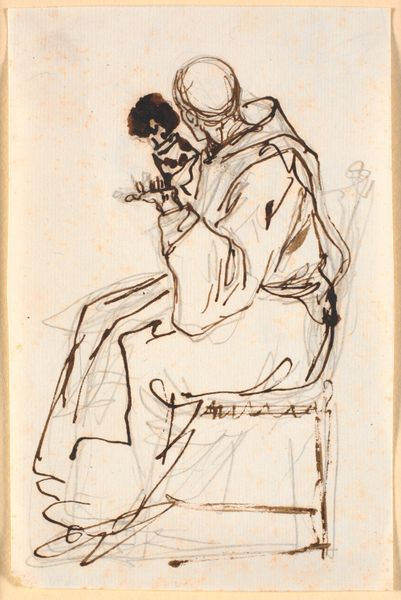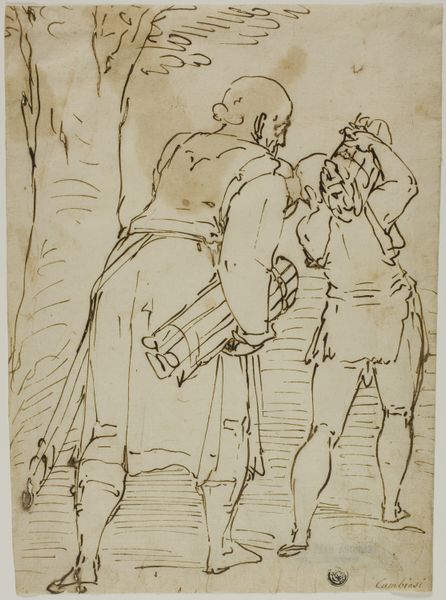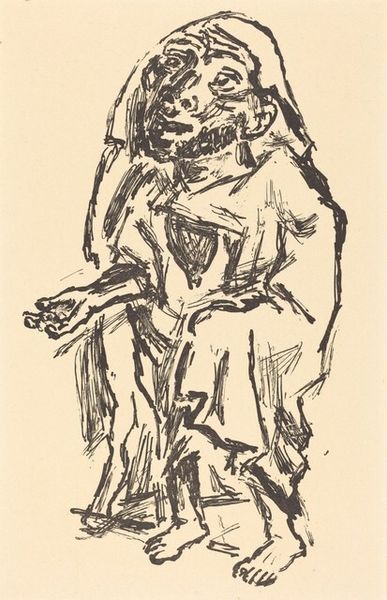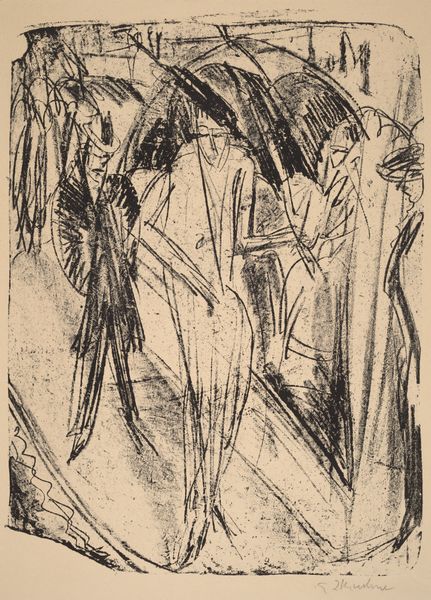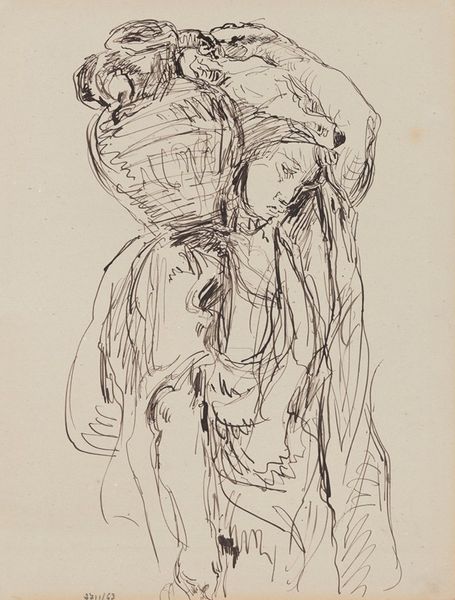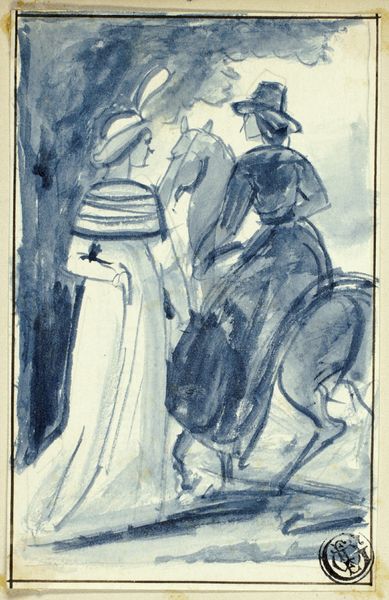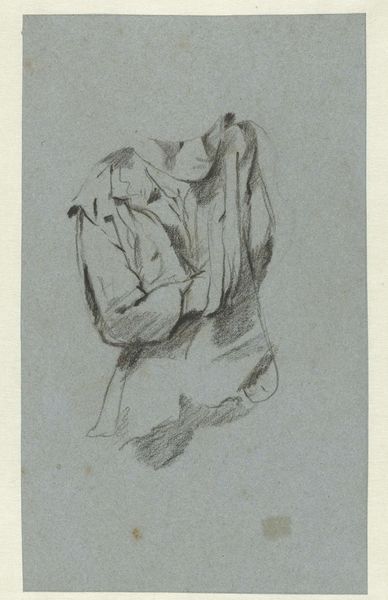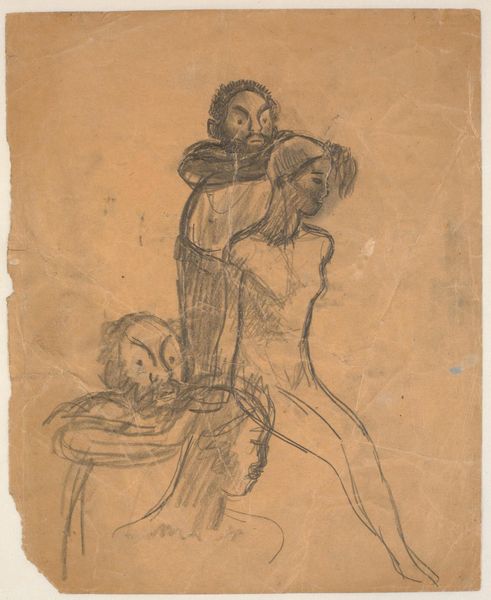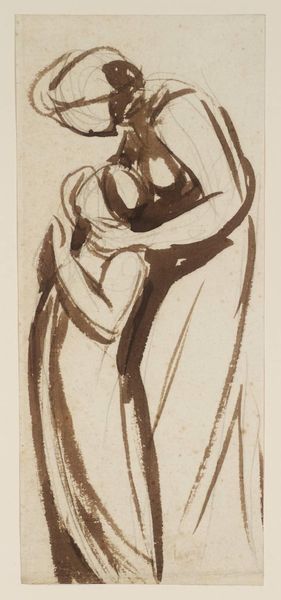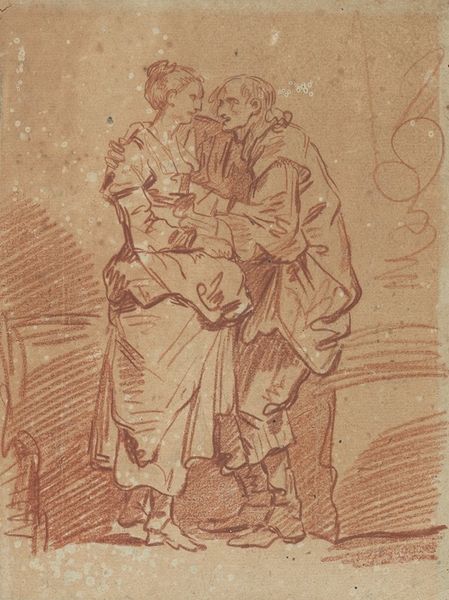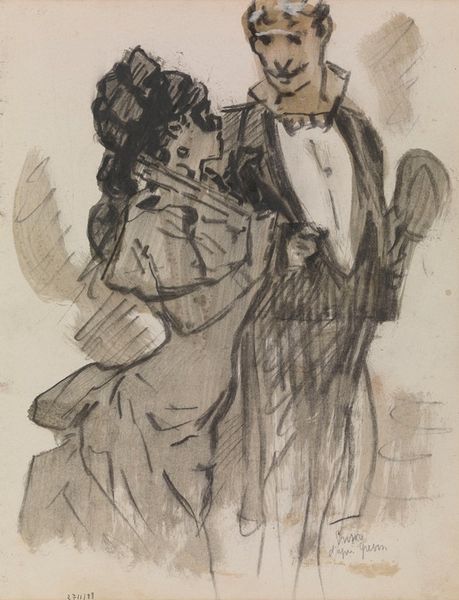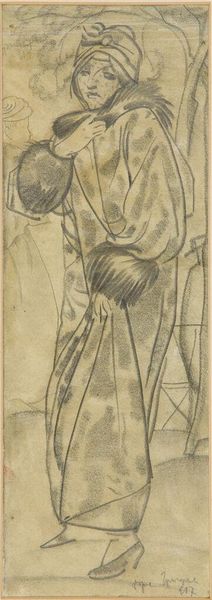
drawing, paper, ink
#
action-painting
#
portrait
#
drawing
#
narrative-art
#
figuration
#
paper
#
social-realism
#
ink
#
monochrome
Dimensions: 65.6 x 42.5 cm
Copyright: Zainul Abedin,Fair Use
Curator: The raw emotion practically leaps off the page, doesn't it? It's hard to ignore the palpable sense of desperation conveyed in this stark composition. Editor: You’re right, it’s a powerful image. This is “Famine Sketch” by Zainul Abedin, created in 1943. It’s an ink drawing on paper, one of a series depicting the Bengal famine. Curator: The stark monochrome really emphasizes the desolation. Abedin has chosen his medium well to mirror the emaciated reality of famine. But also the political reasons surrounding it... Who decides who lives and who doesn't? What structures enable mass starvation in colonized Bengal? The open hand feels less like a request, and more like an accusation. Editor: The power of art as a social commentary. He certainly intended to create change, influence how things are run. His drawings shocked the nation and, in the end, are considered important pieces that initiated social realism in Bangladesh. The figures are so thin, but the lines are bold, almost aggressive. Curator: Exactly! Look at the active brushstrokes; they lend a frantic quality to the scene. You feel their movement, the relentless journey undertaken by these figures. The way the child clings to the mother… it's a portrait of human resilience in the face of absolute devastation, but also dependence—or exploitation? Editor: Absolutely, it raises essential questions about accountability and how governments prioritize certain communities above others. The mother holding the bowl – is it for her, or the children she's tasked to take care of? Curator: Right. Who bears the cost of these socio-economic disruptions? Who gets heard and who remains voiceless? This drawing encapsulates an entire system of injustice. I think about how even now people around the world are being deliberately deprived. Editor: It does offer a window into the historical circumstances but makes you confront present-day systemic issues. Zainul Abedin may have rendered a heartbreaking episode in history but has produced a piece that demands attention. Curator: Art's capacity to act as a timeless mirror reflecting our global conscience, holding us to account for the society we permit to exist, always moves me. Editor: Indeed. Abedin’s work serves as an example that resonates strongly today, demonstrating art's pivotal role as an instrument of collective awareness and social transformation.
Comments
No comments
Be the first to comment and join the conversation on the ultimate creative platform.
